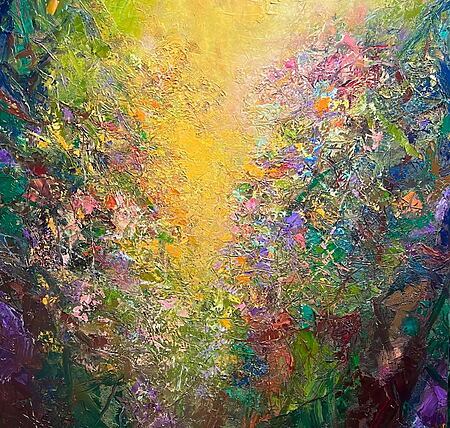Where does art begin?
One of the main reasons that can prevent the "normal" people from dealing with art is uncertainty . Uncertainty arises if you have no basis for assessment to decide what art is and what is not, as well as which work of art has a high artistic value and which is not.
How is uncertainty fighting? By acquiring knowledge, knowledge provides security. Safety in the assessment of whether it art , and at least a little more security about the price this art could be worth.

The question of what art is was and is answered in a variety of ways by artists and art critics. The bow ranges from the veneration of creating craftsmanship to the idea that what an artist considered art is also art. Which immediately follows the question of what an artist is.
What is art? - A journey of discovery with Ralph Caspers from Quarks
In the study by Ralph Caspers, popular moderator of the WDR program Quark , a picture immediately catches the eye: an elephant that balances on a car-it almost looks like a child's drawing. At this point the captivating question begins: What does art actually mean?
The term "art" comes from the word "ability" - an abstract expression that describes something incredible. After the Duden, art includes "creative figures with a wide variety of materials or the means of language and tones - in dealing with nature and world" .
But depending on the point of view, art can take on a variety of meanings. A famous example from 1917 shows how flexible the concept of art is: Marcel Duchamp caused a sensation when he presented an ordinary pissoir at an exhibition in New York. What was initially rejected at the time is now considered an important museum object.
Ducamp's provocative action fundamentally expanded the concept of art - no longer just craftsmanship, but also the conscious selection and the classification of an object can make it an art. However, the history of art goes back much further. the "stone of Makapansgat" , a naturally shaped, facial object that was collected by early humans about three million years ago, could already be considered a kind of "primal art" .
"lion person" is undisputed as a work of art -a 40,000-year-old Mammut icon carnival from Baden-Württemberg, which impresses with impressive craftsmanship and creative imagination. But art is not limited to human works alone. Also in the wildlife can be found that suggest that artistic expression - from complex courtship rituals to artistically designed nesting caves, as Ralph Caspers in the video of Quark's dimension brings us closer to a catchy, entertaining and sympathetic form:
The ubiquitous forms of artistic expression in all known societies indicate the central importance of art for social cohesion. Athletes, such as music, dance or funeral rituals, create connections between humans and pens.
What could be more fascinating than the question of why we humans have created creative since the beginning of our existence? Perhaps the answer is in the nature of art itself: it is also an expression, communication and reflection of our being human. "
Joseph Beuys is another well -known representative of the creative guild who "expanded the concept of art" . The art of the material work has solved his idea of art as a socially forming force. Acquiring more about his work is therefore a good approach of approaching the questions: "What is art?" and "How can art be understood as an idea?"
Art as an idea
The interested layperson can probably best follow this idea of art with the help of people who have already thought about the possible definitions of a concept of art. There are also a variety of offers. This can be a city walk under the motto “Art as an idea” , but also the acquisition of a clever book that deals with these questions.
There are also experts who “explain art”, and they generally do not try to “explain the pictures to the dead rabbit”, but the people.
You could also book a course at a Fernakademie or explore whether the city's adult education center or the local museum offers a course in which the topic of “understanding art” is the focus.
From the experts, the logical path leads to the artists who are willing to explain their art or to take a position on why they don't want to do that. Because this view is also not to be dismissed - an artist deliberately chooses a certain form of expression to comment on the subject that concerns him. Often he can describe his concern less well in words, otherwise he would have chosen paper and pen from the outset, and not brush and canvas, for example.
But it is definitely worth discussing all of these questions: the world of artists' talks is still far too little discovered. Such events are continuously taking place in galleries or museums or artist workshops in Germany.
Of course, constant dealing with various works of art is part of it: At some point, seeing a lot of art also helps to understand art - how the tacit conviction among the gourmets prevails that the real connoisseur can only be a person who has already drunk empty at least one large wine cellar.
Many exhibition organizers have already started to have art shown by interested and knowing lay people. If you visit the documenta this year, with a little luck you will be led by the exhibition by the former Federal Finance Minister Hans Eichel. And can also determine how charmingly a serious financial man can become through the frequent use of art.
Submit him, on Kunstplaza you have the opportunity to search for clever works on art or to adjust it. You can also search for a knowledgeable exhibition accompaniment or offer yourself as an this or search/offer courses that deal with dealing with art.


















